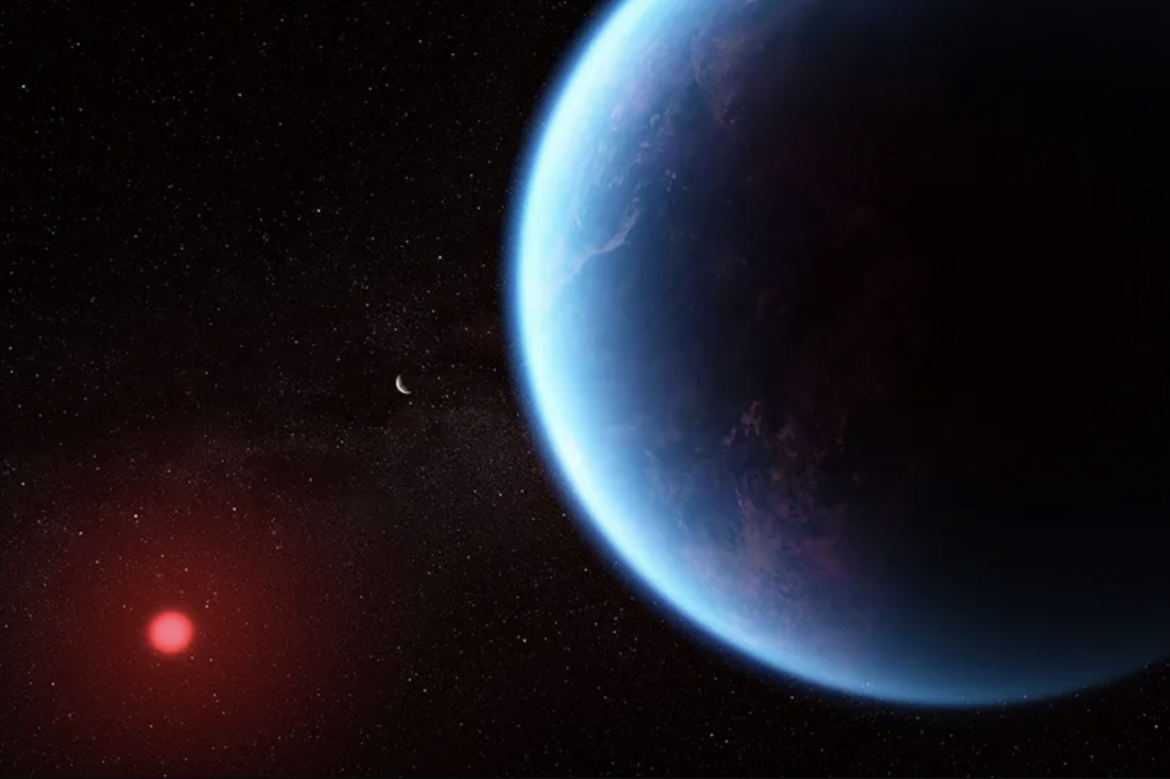
Signs of Life on an Exoplanet
NASA’s James Webb Space Telescope has discovered carbonaceous molecules such as methane and carbon dioxide in the atmosphere of an exoplanet called K2-18 b, which is 8.6 times the size of Earth. Webb’s discovery contributed to recent studies showing that K2-18 b could be a Hycean planet. Hycean planets have the potential to have a hydrogen-rich atmosphere and a surface covered with water.
K2-18 b orbits a cold dwarf star called K2-18, in the habitable zone of its star. It is located 120 light-years from Earth, in the constellation Leo. With a size between that of the Earth and Neptune, it is a “sub-Neptunian” planet. As we do not have such planets in our Solar System, or anywhere nearby, astronomers find it quite fascinating to study their atmospheres. The possibility that K2-18 b could be a sub-Neptunian Hycean planet makes it a very promising candidate for astronomers to develop techniques to search for signs of life on exoplanets.
The planet’s atmosphere, rich in methane and carbon dioxide but lacking ammonia, support the hypothesis that K2-18 b could be a world with a giant water ocean beneath a hydrogen-rich atmosphere. Webb’s initial observations also indicated the possible presence of a molecule called DMS (Dimethyl Sulphide), which is produced on Earth only by living organisms, and predominantly by the phytoplankton in the seas. The information on the presence of DMS is not yet conclusive and needs further confirmation.
The fact that K2-18 b orbits in the habitable zone and contains carbonaceous molecules does not necessarily mean the planet can support life. The planet’s large size raises the possibility that its interior is covered by a mantle of high-pressure ice. Hycean worlds are predicted to be covered in water. However, it should also be considered that the ocean may be too hot to support life, or even to be in a liquid state.
While there is no such sub-Neptunian planet in our Solar System, it is the most common type of planet known in the galaxy. With this study, we now have the most detailed spectrum of a sub-Neptunian planet’s atmosphere in the habitable zone. Characterizing the atmospheres of exoplanets like K2-18 b is an important field of study in astronomy. However, studying their atmospheres is extremely difficult due to the brightness of their massive parent stars.
Researchers overcame this challenge with the help of Webb’s superior systems. A single transit observation with Webb provided results comparable in precision to eight observations made with Hubble over several years.
Researchers are now planning new surveys with Webb’s MIRI (Mid-Infrared Instrument) spectrograph and hope that the results of these studies will provide new insights into the environmental conditions of K2-18 b.
REFERENCES
- 1. https://www.nasa.gov/universe/exoplanets/webb-discovers-methane-carbon-dioxide-in-atmosphere-of-k2-18-b/
- 2. https://phys.org/news/2023-09-webb-methane-carbon-dioxide-atmosphere.html
